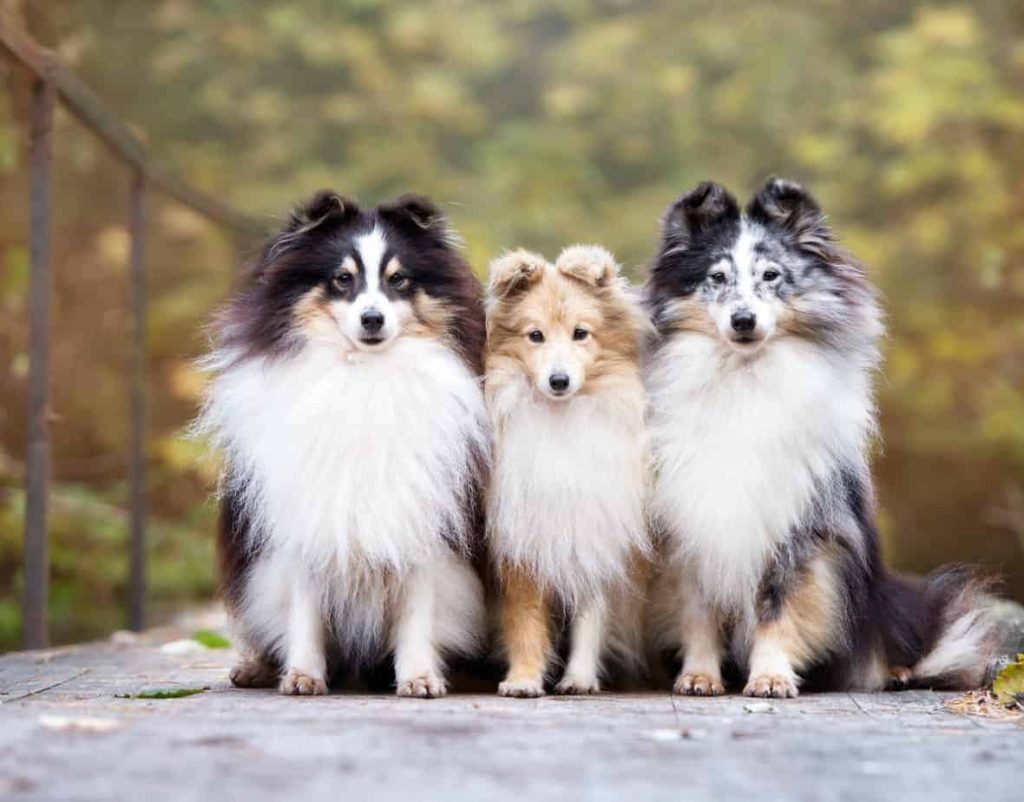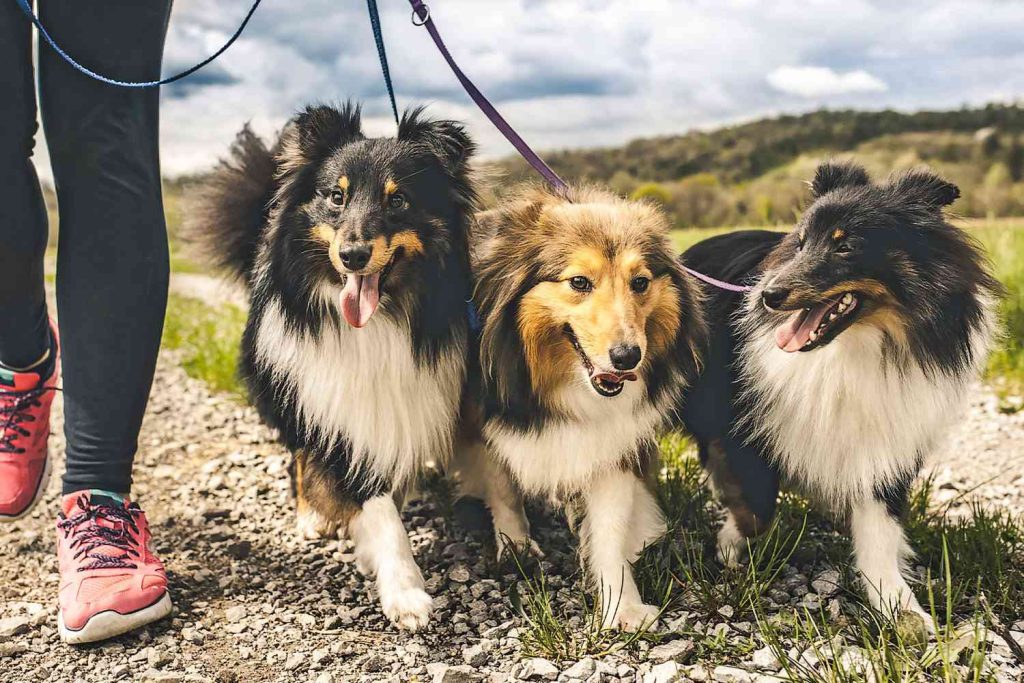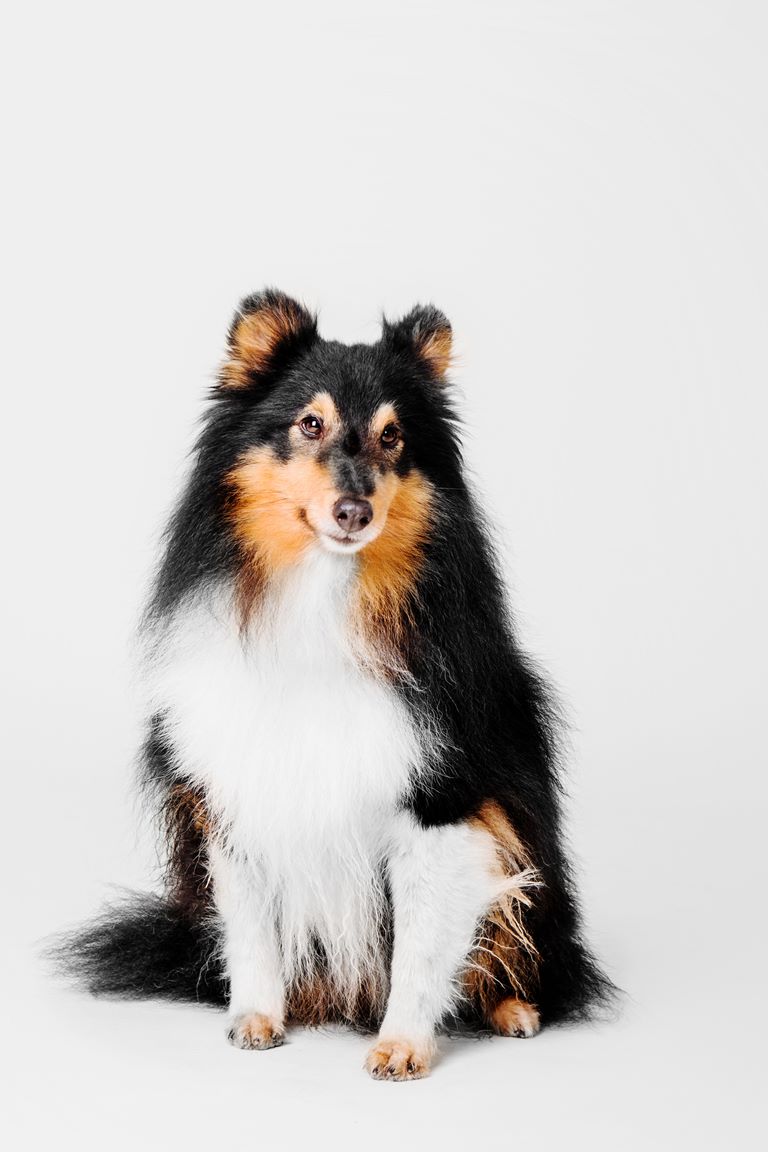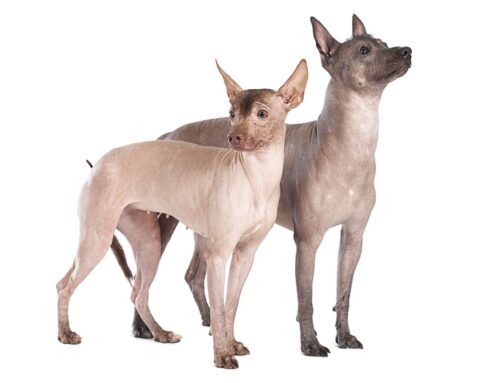Are you considering getting a Shetland Sheepdog as your next pet? If so, you are in for a treat! Also known as Shelties, these adorable dogs are known for their intelligence, loyalty, and affectionate nature. They are highly trainable and excel in obedience competitions, making them a great choice for families who enjoy an active lifestyle. Shelties are also great with children and other pets, and their small size makes them perfect for apartment or small home living. In this article, we will explore the characteristics and needs of the Shetland Sheepdog breed to help you decide if they are the right pet for you.
Breed Category: Herding
Country of Origin: Scotland
Average Size:33-41 cm
Average Weight:6-12 kg
Average Life Span: 12-14 years
Grooming Requirements: Moderate
Exercise Requirements:Moderate to high
History and Origin
The Shetland Sheepdog, also known as the Sheltie, is a small to medium-sized herding dog that originated in the Shetland Islands of Scotland. The breed was developed in the early 20th century by crossing the local Shetland sheepdogs with Rough Collies and other breeds such as the King Charles Spaniel and the Pomeranian. The result was a dog that was smaller than the Rough Collie but had similar physical characteristics and herding abilities.
The Shetland Sheepdog was originally bred to herd and protect sheep in the harsh and rugged terrain of the Shetland Islands. The breed was highly valued by the local farmers and shepherds for its intelligence, agility, and loyalty. The Sheltie was also used as a watchdog and a companion dog, and it quickly became popular among the local population.
In the early 20th century, the Shetland Sheepdog was introduced to the rest of the United Kingdom and to the United States. The breed quickly gained popularity in both countries, and it was recognized by the American Kennel Club in 1911. The Sheltie was also recognized by the Kennel Club in the UK in 1909, and it was given its own breed standard in 1914.
During World War II, the Shetland Sheepdog was used by the military as a messenger dog and as a search and rescue dog. The breed proved to be highly effective in these roles, and it gained even more popularity as a result. After the war, the Sheltie became a popular family pet and show dog, and it remains one of the most popular breeds in the world today.
The Shetland Sheepdog is a highly intelligent and trainable breed that excels in obedience and agility competitions. The breed is also known for its affectionate and loyal nature, and it makes an excellent family pet. However, the Sheltie can be prone to certain health problems such as hip dysplasia, eye problems, and allergies. It is important for potential owners to research the breed thoroughly and to choose a reputable breeder.
In conclusion, the Shetland Sheepdog is a fascinating breed with a rich history and a loyal following. From its humble beginnings as a sheepdog in the Shetland Islands to its current status as a beloved family pet and show dog,

Size and Breed Category
The Shetland Sheepdog, also known as the Sheltie, is a small to medium-sized breed of dog that originated in the Shetland Islands of Scotland. They are classified as a herding breed and are known for their intelligence, agility, and loyalty. Shelties typically weigh between 6-12 kilograms and stand at a height of 33-41 centimeters at the shoulder. They have a long, thick double coat that comes in a variety of colors including sable, black, and blue merle. The breed is known for their distinctive “mane” of fur around their neck and their bushy tail. Shelties have a wedge-shaped head with a pointed snout and almond-shaped eyes that are usually dark in color. They have a graceful gait and are known for their speed and agility.
Shelties are a highly trainable breed and excel in obedience and agility competitions. They are also known for their affectionate and loyal nature, making them great family pets. However, they can be reserved with strangers and may be prone to barking if not properly socialized. Shelties are a relatively healthy breed, but may be prone to certain health issues such as hip dysplasia and eye problems. They have a lifespan of 12-14 years on average. Overall, the Shetland Sheepdog is a beautiful and intelligent breed that makes a great companion for those who are willing to put in the time and effort to properly train and socialize them.

Fur Length and Colour
The fur of the Shetland Sheepdog is typically long and thick, providing excellent insulation against the cold weather. The fur is made up of two layers, with the outer layer being long and straight, while the inner layer is soft and dense. The fur on the neck and chest is particularly thick, giving the dog a distinctive mane-like appearance. The fur on the legs and tail is also long and flowing, adding to the dog’s overall elegance. The fur of the Shetland Sheepdog comes in a variety of colours, including sable, black, and blue merle. Sable is the most common colour, with shades ranging from golden to mahogany. Black is also a popular colour, with a shiny, jet-black coat that is striking against the dog’s white markings. Blue merle is a less common colour, with a grey-blue base coat and black patches. The fur of the Shetland Sheepdog is a defining characteristic of the breed, adding to its beauty and charm.
The colour of the Shetland Sheepdog’s fur can vary greatly, even within the same litter. Sable is the most common colour, but there are many variations within this colour, including light sable, dark sable, and shaded sable. Light sable dogs have a pale, almost cream-coloured coat, while dark sable dogs have a rich, deep brown coat. Shaded sable dogs have a mix of light and dark hairs, creating a subtle gradient effect. Black and white is another popular colour combination, with the black fur being shiny and jet-black, and the white fur being bright and crisp. Blue merle dogs have a unique and striking appearance, with a grey-blue base coat and black patches that can vary in size and shape. The colour of the Shetland Sheepdog’s fur is just one of the many factors that make this breed so special.

Termperament and Trainability
Shetland Sheepdogs are known for their high energy levels and intelligence. They are a highly trainable breed and excel in obedience and agility competitions. However, their intelligence can also make them stubborn and independent, requiring a firm and consistent training approach. Shetland Sheepdogs are also sensitive to their owner’s emotions and can become anxious or nervous if their owner is stressed or upset. It is important to provide them with plenty of mental and physical stimulation to prevent boredom and destructive behavior.
In terms of temperament, Shetland Sheepdogs are affectionate and loyal to their owners, but can be reserved or wary around strangers. They are also known for their vocal nature and will bark to alert their owners of any perceived threats. Shetland Sheepdogs are generally good with children and other pets, but early socialization is important to prevent any potential aggression or fearfulness. Overall, Shetland Sheepdogs make excellent companions for active individuals or families who are willing to provide them with the attention and exercise they require.

Known Health Conditions
Shetland Sheepdogs are prone to a number of health conditions, including hip dysplasia, which is a genetic condition that affects the hip joint. This can cause pain and discomfort, and in severe cases, can lead to arthritis. Another common health issue in Shetland Sheepdogs is progressive retinal atrophy, which is a degenerative eye disease that can lead to blindness. This condition is also genetic, and there is currently no cure. Additionally, Shetland Sheepdogs can be prone to allergies, which can cause skin irritation and itching. These allergies can be caused by a variety of factors, including food, pollen, and dust.
Another health condition that Shetland Sheepdogs are susceptible to is epilepsy, which is a neurological disorder that can cause seizures. This condition can be managed with medication, but it can be difficult to control in some cases. Shetland Sheepdogs can also be prone to a condition called von Willebrand’s disease, which is a bleeding disorder that affects the blood’s ability to clot. This can cause excessive bleeding from even minor injuries, and can be life-threatening in severe cases. Finally, Shetland Sheepdogs can be prone to dental issues, such as periodontal disease, which can cause tooth loss and other health problems. Regular dental care, including brushing and professional cleanings, can help prevent these issues.
Openness to Strangers
Shetland Sheepdogs are known for their friendly and welcoming nature towards strangers. They are a breed that is always eager to meet new people and make new friends. This trait makes them excellent family pets as they are always ready to greet visitors with a wagging tail and a friendly bark. Shetland Sheepdogs are also known for their loyalty and devotion to their owners, which makes them excellent watchdogs. They are always on the lookout for any potential danger and will bark to alert their owners of any suspicious activity. Overall, Shetland Sheepdogs are a friendly and sociable breed that loves to interact with people.
Despite their friendly nature, Shetland Sheepdogs can be quite reserved around strangers at first. They are a breed that takes their time to warm up to new people and situations. However, once they feel comfortable, they become very affectionate and playful. Shetland Sheepdogs are also known for their intelligence and trainability, which makes them excellent candidates for obedience training. They are quick learners and respond well to positive reinforcement. Shetland Sheepdogs are a breed that thrives on human interaction and attention, which is why they make such great family pets. They are always eager to please their owners and will go to great lengths to make them happy.
Playfulness Level
The Shetland Sheepdog is a highly playful breed that loves to engage in various activities. They are known for their high energy levels and their love for playtime. These dogs are always up for a game of fetch or a run around the park. They are also great at agility training and love to show off their skills. The Shetland Sheepdog’s playful nature makes them a great companion for families with children, as they are always ready to play and have fun.
In addition to their love for playtime, the Shetland Sheepdog is also a very intelligent breed. They are quick learners and enjoy being challenged with new tasks and activities. This makes them great candidates for obedience training and other forms of mental stimulation. The Shetland Sheepdog’s playful and intelligent nature makes them a great addition to any household that is looking for a fun-loving and active companion.
Suitability as a Pet for Children
Shetland Sheepdogs, also known as Shelties, have a friendly and affectionate nature, making them a great choice as a pet for children. They are highly intelligent and easy to train, which can be a fun activity for kids to participate in. Shelties are also energetic and love to play, making them great companions for active children who enjoy outdoor activities. Additionally, they are a relatively small breed, making them suitable for families living in smaller homes or apartments. Overall, Shetland Sheepdogs can make wonderful pets for children who are looking for a loyal and playful companion.
Exercise Needs
Shetland Sheepdogs require a moderate amount of exercise to maintain their physical and mental health. As an active breed, they enjoy daily walks and playtime in a secure, fenced area. A minimum of 30 minutes of exercise per day is recommended, but they will happily engage in more vigorous activities such as hiking, agility training, and obedience classes. It is important to note that Shetland Sheepdogs have a strong herding instinct and may try to herd other animals or children during playtime, so supervision is necessary. Additionally, they are sensitive to extreme temperatures and should not be exercised in hot or cold weather conditions.
In addition to physical exercise, Shetland Sheepdogs require mental stimulation to prevent boredom and destructive behavior. They are highly intelligent and enjoy learning new tricks and commands. Interactive toys, puzzle games, and obedience training can provide mental stimulation and strengthen the bond between the dog and owner. Shetland Sheepdogs also thrive on social interaction and enjoy spending time with their family. They may become anxious or develop behavioral issues if left alone for extended periods of time. Therefore, it is important to provide them with regular exercise and mental stimulation, as well as plenty of love and attention.
Suitability for a Multi-Pet Family
Shetland Sheepdogs have a reputation for being friendly and sociable with other pets. They are known to get along well with cats and other dogs, as long as they are properly socialized from a young age. However, like any breed, individual personalities can vary and some Shelties may not be as accepting of other animals. It is important to introduce them slowly and supervise their interactions to ensure everyone gets along.
Housing Requirements
Shetland Sheepdogs require a living space that is suitable for their size and energy levels. They are an active breed that enjoys regular exercise, so a home with a garden or access to outdoor space is ideal. The garden should be securely fenced to prevent the Shetland Sheepdog from escaping, as they have a tendency to wander. Inside the home, they require a comfortable and warm space to rest, with access to fresh water and food. Shetland Sheepdogs are intelligent and enjoy mental stimulation, so providing them with toys and puzzles can help keep them entertained.
In terms of grooming, Shetland Sheepdogs have a thick double coat that requires regular brushing to prevent matting and tangling. They shed heavily twice a year, so owners should be prepared for increased grooming during these times. Shetland Sheepdogs are prone to dental issues, so regular teeth cleaning is important. They are also prone to weight gain, so owners should monitor their diet and exercise levels to prevent obesity. Overall, Shetland Sheepdogs require a dedicated owner who is willing to provide them with the care and attention they need to thrive.

Summary
Shetland Sheepdogs make great pets for families who are looking for a loyal and intelligent companion. They are known for their friendly and affectionate nature, and are great with children. They are also highly trainable and excel in obedience and agility competitions. As a medium-sized breed, they are well-suited to both indoor and outdoor living, and require moderate exercise. Overall, Shetland Sheepdogs are a great choice for those looking for a loving and trainable pet.
Shetland Sheepdog Dog FAQS
Yes, Shetland Sheepdogs are intelligent and eager to please, making them relatively easy to train.
Shetland Sheepdogs can adapt to apartment living as long as they receive enough exercise and mental stimulation.
Yes, Shetland Sheepdogs are known to be good with children and make great family pets.
Shetland Sheepdogs are known to be vocal and may bark frequently if not properly trained and socialized.
Shetland Sheepdogs are prone to certain health issues such as hip dysplasia and eye problems. Regular vet check-ups are recommended.
Yes, Shetland Sheepdogs shed a moderate amount and require regular grooming.
Shetland Sheepdogs need at least 30-60 minutes of exercise per day.
The recommended daily amount of food for a Shetland Sheepdog is 1-1.5 cups of high-quality dry dog food.
The average weight of a Shetland Sheepdog is between 6-10 kg.
The average life expectancy of a Shetland Sheepdog is 12-14 years.






Leave A Comment